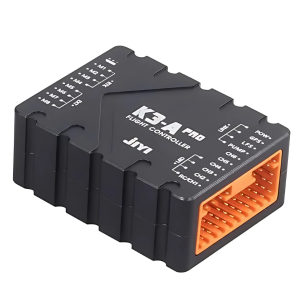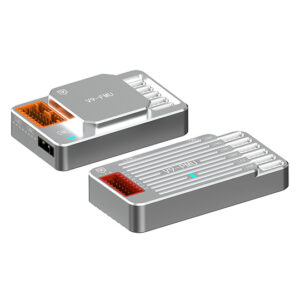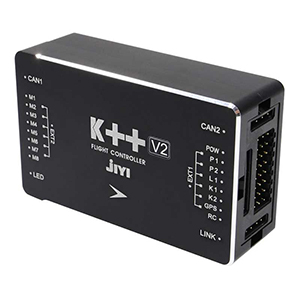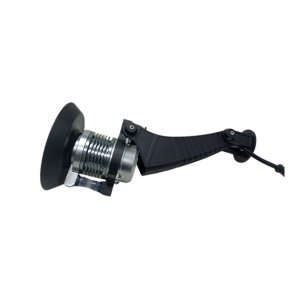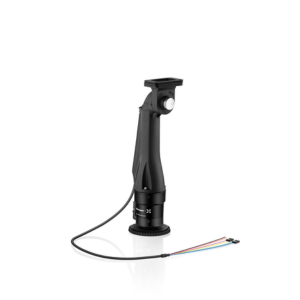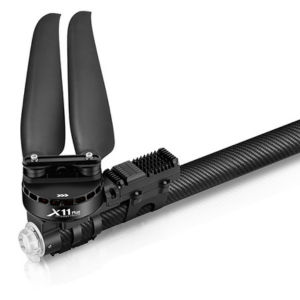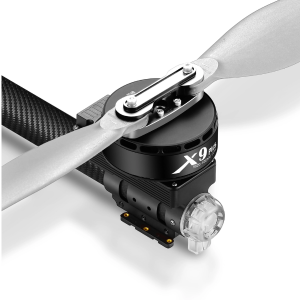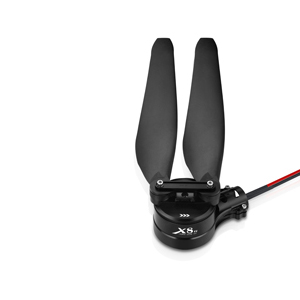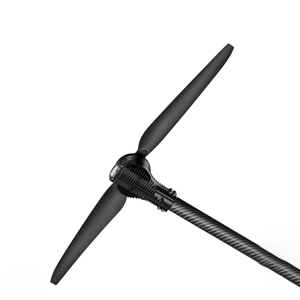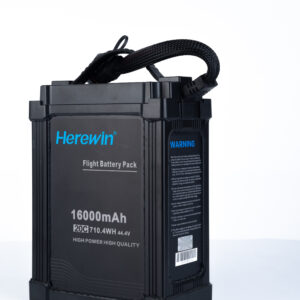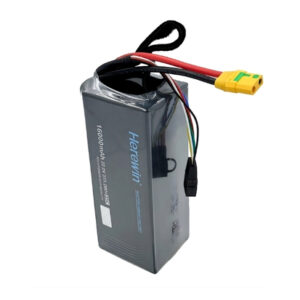Flight Controllers and Radars
Jiyi K-3A Pro Flight Controller Kit for Agriculture Drones at Best Price
Jiyi Obstacle Avoidance Radar Back (UAV-R21-B) Rear Radar for Agriculture drones
Jiyi Obstacle Avoidance Radar Front (UAV-R21-F) Forward Radar for Agriculture drones
Jiyi Terrain Simulating following Radar – Agriculture Drones Components
VK V9 Flight Controller with GPS Flight Control System for Agriculture Drones
Jiyi K++V2 Flight Controller for Agriculture Drone Kit with GPS, Remote LED and PSU Original
Flight Controllers and Radars for Drones
The Flight Controllers & Radars is becoming more and more vital in modern farming because it helps with spraying, planting, mapping, and surveillance while also making things more efficient and lessening the need for manual work. The flight controller and drone radar are the most important parts of these clever flying machines. They determine how safely and successfully your agricultural drone will operate.
Explore everything you need to know about agricultural drone flight controllers and drone radar systems, including how they work and which features are most important. This will help you make smart, high-performance selections for your agricultural drone setup.
What is an Agriculture Drone Flight Controller?
The agriculture flight controller is the brain of any drone. It is like a brain that collects data from sensors like GPS, gyroscope, accelerometer, magnetometer, barometer, and radar, and uses it to control the flight of the aircraft.
The flight controller does more than just keep agricultural drones stable.
- Keeps the drone level while it’s flying
- Follows pre-set waypoints for missions that don’t need a person to be there
- Changes in altitude depend on the ground
- Sets the intervals between sprays and the pump’s output
- Responds to commands from afar
- Carries out emergency plans such as return-to-home
A best flight controller for agriculture drone ensures that farm activities are safe, stable, and highly efficient. This saves time and chemicals and also increases production.
Why Specialized Flight Controllers for Agriculture Drones?
Hobbyist or photography drones are built for lighter tasks and worry-free flying, while agricultural drones are built for tough field work that needs to be done quickly and efficiently. They carry large volumes of liquids, fly for long periods of time, and perform automated spraying and mapping activities over large areas of agricultural land.
To meet these complex requirements, an agricultural drone flight controller needs to do more than just stabilize the drone. It must have smart flight logic, excellent payload management, and the ability to make changes in real-time.
Here’s why a specialized flight controller is essential for agri-drones:
1. Multi-Pump Spraying Systems
Modern agricultural drones have multiple nozzles and pumps, allowing them to spray a wider area and work over larger areas. A general-purpose drone flight controller cannot handle these systems very well.
- A dedicated flight controller for agriculture lets
- Control of two or four spray pumps separately
- Smart spray modes include interval, continuous, and auto-stop at the edge.
Working with flow meters and sensors that measure liquid volume
2. Terrain Following with Radar Integration
There are hills, uneven land, and different heights of crops in agricultural fields. For uniform spraying, it is important to keep the drone at a constant distance from the crop canopy.
The flight controller for agricultural drones works with terrain-following radar, which:
- Always look at the earth below
- Change the height of the drone in real time
- Work even when there is no GPS signal, as when it’s cloudy or under trees.
This is very important when spraying rice fields, orchards, vineyards or hilly farms.
3. Variable Spraying Based on Speed or Crop Density
The spray pattern needs to be changed depending on the following:
How fast does the drone fly?
- Overlapping passes
- Number of crops
- Rotation angle and end point
An agricultural FC can change the spray flow in real time, increasing or decreasing it based on flight data. This feature reduces chemical waste and improves yield.
Some modern flying controllers can also recognize objects using AI, which lets them intelligently apply over specific crops or areas that are affected.
4. Real-Time Data Transfer to Ground Station
Agricultural drones need to communicate with ground control stations (GCS) or mobile apps to plan missions, monitor performance, and detect problems.
A specialized agriculture drone FC helps with:
- Live telemetry sending
- Uploading and downloading mission routes
- Reports on flights and sprays
- Tuning parameters from a distance
5. Heavy Payload & Large Frame Support
When fully loaded with fuel and batteries, spraying drones can weigh more than 25 kg. Standard flight controllers made for photography drones that weigh 1–2 kg just can’t handle the motor load, power distribution, or fail-safe needs of these bigger UAVs.
An agriculture drone flight controller is made for:
- 6 to 8 ways to set up the motor
- Integration of heavy-lift ESC and motor
- GPS, compass, and IMU have fail-safe redundancy.
- Stable performance in rain, wind, and heat
These characteristics make sure that the device works safely and reliably, even in bad weather or emergencies.
Key Features of the Best Agriculture Drone Flight Controller
The best FC for drone should have these advanced features:
Radar Terrain Following:
This allows the drone to remain at a fixed distance from the crop canopy, even over hills and valleys, so that pesticides can be sprayed evenly.
Real-time Flow Control:
Works with a flow meter to change the output of the pump based on the speed of the drone, so that it doesn’t spray too much or too little.
Autonomous Mission
PlanningFrom the base station, you can map fields and set flight paths. This is great for large farms that require repeated spraying of the same area.
Multiple Payload Support:
Supports 2-4 pumps, multiple spray nozzles, and tank sensors for advanced spraying control.
RTK/PPK GPS Integration:
For positioning accuracy down to the centimetre level, which is crucial for commercial agricultural drone operations.
Safety and Backup:
Features such as low battery return, GPS loss failsafe, obstacle detection, and emergency shutdown ensure that drones remain safe in uncertain field conditions.
Flight Controller with GPS – For Smart Agri Operations
A GPS drone flight controller turns a simple UAV into a precision farming tool. It integrates satellite positioning with smart control logic, allowing the drone to fly itself safely and with excellent spraying precision, even in large and complex agricultural fields.
What Makes GPS-Enabled Flight Controllers Crucial for Agriculture?
A flight controller with built-in GPS for agricultural drones does more than just tell you where you are. It also powers a whole set of automation functions that make things easier, cover more area, and ensure you stay within safety zones and farm boundaries.
Let’s take a look at the powerful things GPS flight control can do:
- Navigation using Auto Waypoint
GPS-equipped flight controllers for agricultural drones can follow a series of programmed waypoints with great accuracy.
- Operators can use software or mobile apps to plan flight paths.
- The drone follows perfect AB lines or unique spray patterns as it flies across fields.
- Auto-takeoff and auto-landing make the pilot’s job easier.
This ensures that the entire field is covered with as little overlap or gaps as possible, which is important to ensure that fertilizers and pesticides are sprayed evenly.
- Return-to-Home (RTH) Function
When flying expensive drones with heavy equipment, losing signal or running out of battery can be dangerous.
The flying controller has RTH built in; thus, the drone does this on its own:
- Figure out the safest way to get back
- Finds its way back to the launch site
- Lands smoothly without any help from the pilot
Some powerful agricultural drone FCs let you dynamically reach the last safe position while spraying, keeping the mission going and cutting down on chemical waste.
- Speed-Adjusted Spraying for Uniform Coverage
Using GPS, the FC can track the drone’s movement in real time. When connected to a spray control system, the flight controller can perform the following functions:
- When the drone accelerates up, make the spray come out more.
- Lower it when you turn or slow down.
- Keep the amount of spray per acre the same.
This stops chemicals from being used too much or too little, which increases both yield and resource efficiency.
- No-Spray Zone Programming
You should not spray certain areas, such as roads, water bodies, or houses.
With GPS-enabled drone flight controllers, operators can:
- Mark off-limits regions on the mission map
- When the drone gets to designated areas, the sprayer will turn off by itself.
- Once you’re back in safe spray territory, turn it back on.
- Geofencing for Boundary Control
Geofencing is like an invisible fence that keeps people out of your area. You can do this if the GPS-enabled flight controller supports it:
- Set the limits for virtual flights
- Keep the drone from flying into fields that are off-limits or next to it.
- If the boundary is crossed, send out notifications or emergency RTH.
This is quite useful for larger farms or when multiple drones are flying over nearby fields at the same time.
- Support for RTK and PPK GPS
When it comes to high-end agricultural drones, they usually need to be accurate to within 5 cm, especially when
- Spraying in between the rows of vines
- Making maps of rice paddies that are sensitive to elevation
- Working in places where GPS doesn’t work, such as forests or hillsides
This is where RTK (Real-Time Kinematic) and PPK (Post-Processed Kinematic) come into play. These technologies work with flight controllers that offer the following features:
- Accuracy to within a centimeter
- Integration with a base station or NTRIP
- The best performance for precision farming
Some well-known farm drone FCs, like the JIYI K++ V2 or Pixhawk-based RTK-enabled systems, already have RTK modules built in.
7. Multi-Zone Mapping & Area Management
Many smart drone flight controllers with GPS also work with:
- Keeping more than one field map
- Making mission zones based on the type of crop or the need for treatment
- Getting KML/SHP files in and out of GIS systems
This is great for farm managers, drone service providers, or agricultural consultants whose land is divided into small pieces.
Agriculture Drone Radars
Agriculture drone radars are intelligent sensors that help drones “see” their surroundings using radio or millimeter waves. These radars are designed to enhance flight stability, improve spraying accuracy, and avoid obstacles—especially in unpredictable agricultural environments.
Drone radar sensors provide accurate real-time information about altitude and object detection, even in locations where GPS doesn’t work or when flying fast and at low altitudes.
Why Are Drone Radars Crucial for Agriculture?
Drone radars make agricultural drones safer and more efficient in the modern precision farming world. These radars aren’t just extra equipment; they’re a vital part of your agricultural drone setup, especially when you’re flying over difficult terrain, in unpredictable weather, or near sensitive crops.
Why professional farms need agricultural drone radar:
1. Low-Altitude Precision Flying
- Function: Tells how far the drone is from the ground in the vertical direction
- Use Case: Keeps a steady flight height above uneven ground
- Radio wave or millimeter wave sensing technology
Some well-known models are:
- JIYI TF Series (TF02, TF-Luna)
- AG++ Terrain Sensors
- Benewake or SIYI Altimeters
Integration: It connects directly to the flight controller of the agricultural drone and sends altitude corrections in real-time.
2. Navigating Uneven and Sloped Terrain
Most farms aren’t flat; they’re in
- Hilly areas
- Terraces for rice
- Orchards with different heights
Barometric and GPS elevation data are not very reliable at these locations, especially when ground elevation changes rapidly. Radar-based geo-following systems use radio wave or millimetre wave techniques to determine precise distances to the ground. This allows them to:
- Constant height of spray
- Path of the drone is smoother
- Less chemical waste
- Fewer crops get hurt by drones that fly low.
3. Obstacle Detection and Avoidance
There are many things that could go wrong in agricultural fields, such as:
- Tall trees at the edges
- Wires and poles for electricity
- Water pipes or irrigation systems
- Fencing, nets, or tools for farming
Traditional drones without radar can’t see these things, especially when flying on autopilot. But agricultural drone radars, especially those that look forward or in all directions, act like the drone’s “eyes,” automatically finding and avoiding obstacles.
This greatly reduces the chance of accidents, keeps critical drone hardware safe, and ensures that spraying or surveying can occur without anyone having to do anything at all times.
4. Reliable in Dust, Fog, and Harsh Weather
There are a lot of agricultural activities that happen during:
- Early morning (fog)
- Summer months (when it is very hot)
- After a rain (when the ground is wet or muddy)
In these conditions, camera or LiDAR based systems may not work, yet drone radars for farming work perfectly no matter how much light, dust or moisture there is.
This makes radar sensors much more reliable for Indian farms, where weather and topography can change rapidly during the day.
5. Stable Hovering and Spot-Spraying
For some agricultural tasks, such as spraying sick crops, dropping seed capsules, or taking aerial measurements, the drone must be able to hover exactly in place.
Radars give the flight controller of agricultural drones very accurate information about altitude, ensuring that
- No drifting because of the wind
- Perfect hover over the desired spot
- Spray that is balanced and doesn’t hurt plants
This is especially useful in orchards, vineyards or greenhouses where canopy height and density vary.
6. Real-Time Flight Adaptation
Modern agricultural flight controllers, which work with radar, can alter flight paths based on terrain and any obstacles along the way.
This smart control is very important for:
- Missions that shower themselves
- Mapping out the exact route
- Patrolling the field borders
The drone’s radar acts like a dynamic assistant, sending real-time information to the controller and enabling it to react to changes much faster than a human pilot.
Types of Ag Drone Radars
1. Terrain Following Radar (Altimeter Radar)
Used for:
- Maintaining spraying height at 1–3 meters
- Adjusting in real-time as the terrain rises or falls
- Working even without GPS signal (underground, under trees)
Popular models: JIYI TF Series, AG++ Integrated Radars
2. Obstacle Avoidance Radar
Placed at the front, side, or bottom of the drone to detect:
- Trees
- Poles
- Power lines
- Water tanks
- Human presence
It’s especially important for fully autonomous drones operating without supervision.
3. Dual Radar Integration
Top-end drones combine both radar types for terrain simulation and obstacle detection, making flight ultra-safe and efficient.
Remote Controller vs Flight Controller – Know the Difference
When it comes to agricultural drones, many farmers, integrators, and even people new to drones confuse a remote controller (RC) and flight controller (FC). Both are vital to safe and effective operations, but they perform very different functions in your drone system.
Let’s break it down:
Remote Controller (RC) | Flight Controller (FC) |
Handheld device operated by the pilot | Internal electronic board inside the drone |
Sends real-time commands like take-off, land, and change altitude | Executes those commands by controlling motors, sensors, and navigation |
Connects to the drone via RF signal or 4G/5G for long range | Interfaces with GPS, radar, ESCs, IMU, and other drone components |
Examples: Skydroid H12, SIYI MK15, SIYI MK32 | Examples: AG++ Flight Controller, Jiyi K++ V2, Pixhawk-based FCs |
Contains display screen or app for telemetry feedback | Contains flight logic, spraying logic, return-to-home, failsafe triggers |
Often includes camera control and live FPV video feed | Makes real-time flight corrections using radar, barometer, GPS, and compass |
Where to Buy Agriculture Drone Flight Controllers & Radars in India?
Bharat Skytech is the best place in India to acquire reliable and tested agriculture drone flight controllers and radar systems. We sell original gear like the JIYI K++ V2 and AG++ flight controllers, as well as high-precision GPS modules that can be used with RTK for centimeter-level accuracy. Our range also includes radar sensors that enable drones to follow the ground and avoid obstacles, which are essential for safe and effective drone operations in agriculture.
We also sell sprayer pump control units, integration accessories, and high-performance remote controllers from well-known manufacturers like Skydroid and SIYI. Bharat Skytech ensures you receive reliable hardware, expert advice, and dedicated after-sales support, including repairs and technical consulting, whether you’re building a DIY agriculture drone, operating a drone service company, or producing UAVs on a large scale. We make sure that your farm drone setup works and is ready for the future.
Frequently Asked Questions
What is the price of a flight controller for an agriculture drone in India?
Flight controller price in India starts around ₹5,000 for basic models, while advanced agriculture drone flight controllers like Jiyi K++ V2 or AG++ range from ₹18,000 to ₹40,000 based on GPS, radar, and features.
What are the key components of a drone flight controller system?
A drone flight controller system includes the FC board, GPS, IMU sensors, barometer, radar, PMU, and control ports. Agriculture drones add sprayer control, flow meters, and no-spray zone logic for precision farming.
What is the function of a radar in an agricultural drone?
Drone radars ensure safe, accurate flight by enabling terrain following and obstacle avoidance—essential for spraying over uneven fields where GPS alone can’t perform reliably.
Do agricultural drone flight controllers come with GPS?
Advanced agriculture drone flight controllers like the Jiyi K++ V2 and AG++ often include GPS or optional RTK upgrades, enabling auto waypoints, geofencing, return-to-home, and speed-based spraying.
Are radar sensors necessary for crop spraying drones?
Radar sensors are essential for low-altitude spraying, ensuring consistent height, reducing drift, and detecting terrain changes that GPS or barometers can’t.
